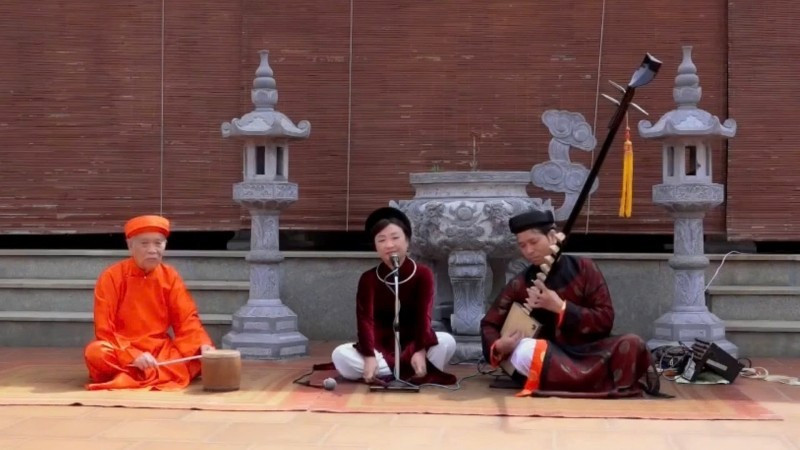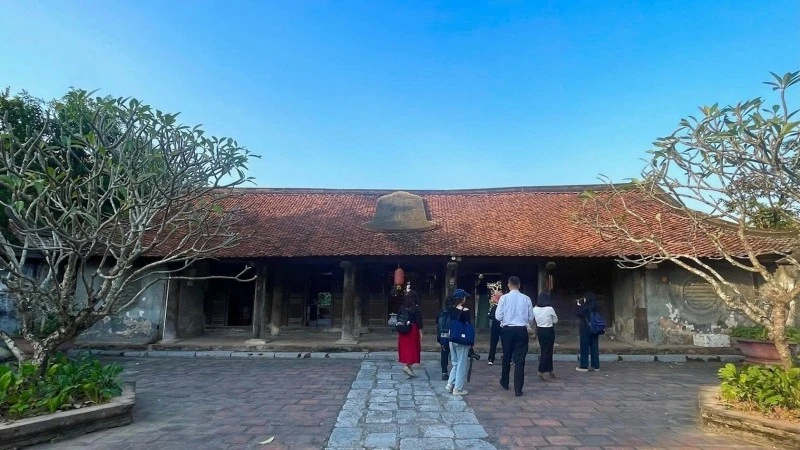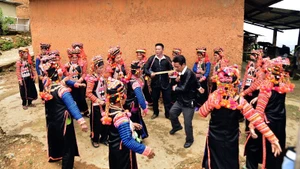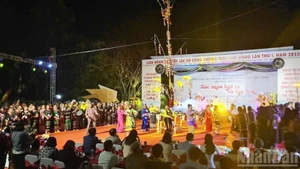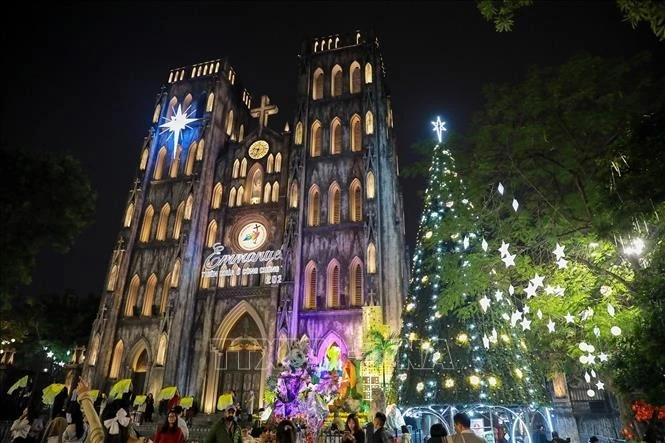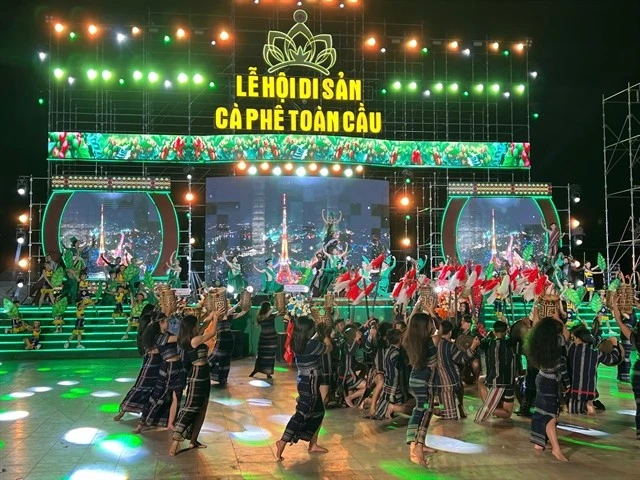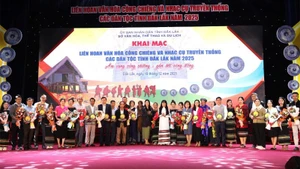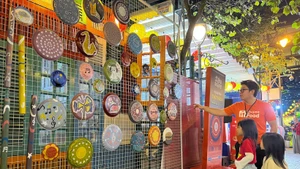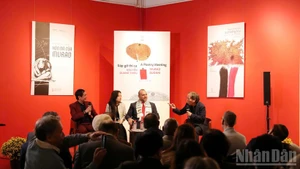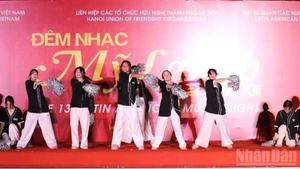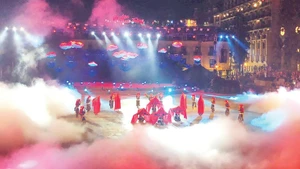Phung Thi Hong was born in 1952 in Dan Phuong Commune, Ha Noi. From an early age, she showed a talent for music, particularly enjoying Cheo singing and poetic recitation. At the age of 19, while working at the Department of Culture and Information of Phuc Tho District in the former Ha Tay Province, she volunteered to join the frontline, using her singing to boost the morale of soldiers. She was then assigned to the second assault team of Ha Tay, heading for the battlefield.
At every military station she stopped, performances featuring traditional folk melodies became a precious source of spiritual strength for the soldiers. On November 25, 1971, while performing at Station 34 of Group 559, Phuong Hong was injured. “I was dancing when a bullet struck directly into my right arm,” she recalled.
In 1972, after successfully completing her mission on the Truong Son front, Phuong Hong returned to her hometown. She resumed her work at her former agency before being transferred to the Centre for Culture and Information of the former Ha Tay province.
In 1990, by chance, she heard Meritorious Artisan Bach Van perform ca tru. The lyrical melodies and rhythms deeply captivated her. From that chance encounter, she began to seek out books and documents about ca tru. The real turning point came in 1994 when she met artisan Nguyen Thi Chuc. After hearing Chuc perform soul-stirring ca tru pieces, Hong asked to become her student.
Phuong Hong’s journey of seeking masters to learn from officially began. Every Sunday, she travelled to Nguyen Thi Chuc’s home for lessons. Over four years (1994–1998), she gained a solid foundation in ca tru and grew the confidence to perform. With a keen desire to learn, she also sought out artists from the Thai Ha Ca Tru Club. She collected numerous tapes and recordings of People’s Artist Quach Thi Ho and other legendary performers in the ca tru world to study and practise on her own.
Driven by deep affection for ca tru and a desire to keep this folk art alive, she began thinking of ways to pass it on. In 1998, she boldly proposed to the cultural leadership of the former Ha Tay province to open classes in ca tru.
She diligently studied under various artisans and gradually developed her own teaching methods to reach learners of all ages. The number of students grew steadily, and performances throughout the province began to feature ca tru singing troupes.
Alongside teaching, she boldly composed new lyrics based on traditional ca tru melodies. Her lyrics, often reflecting contemporary life, made the art form much more accessible to younger audiences. To date, she has composed lyrics for over 100 songs.
In 2007, she retired, her arm still carrying a lodged bullet, which continued to affect her health. But her love for ca tru never faded. Rather than rest and enjoy retirement, she travelled to many localities to directly teach the art. In 2013, she became Head of the Ca Tru Club at the Viet Nam Centre for the Development of Music Arts under the Viet Nam Musicians’ Association.
According to Vu Duc Huy, Deputy Director of the Viet Nam Centre for the Development of Music Arts, “Meritorious Artisan Phuong Hong is a leading figure at our centre. She was the one who revived the art of ca tru here and established the club. She not only won numerous awards as a distinguished performer, but also introduced ca tru to international audiences through performances in various European countries.”
After more than 30 years dedicated to ca tru, continuously expanding her knowledge and sharing it with others, hundreds of students have trained under Phuong Hong, many of whom have become established artists themselves.
Now 72, her schedule remains full with classes and performances. When not teaching, she still seeks out senior artists to learn from, believing that ca tru is a vast art form.
Perhaps one of the deepest motivations that fuels Phuong Hong’s perseverance lies in her wartime experience—those harsh years on the battlefield. She confides: “If the soldiers could overcome such suffering and sacrifice during war, then on this cultural front, in times of peace without gunfire, how could an artist possibly give up?”
